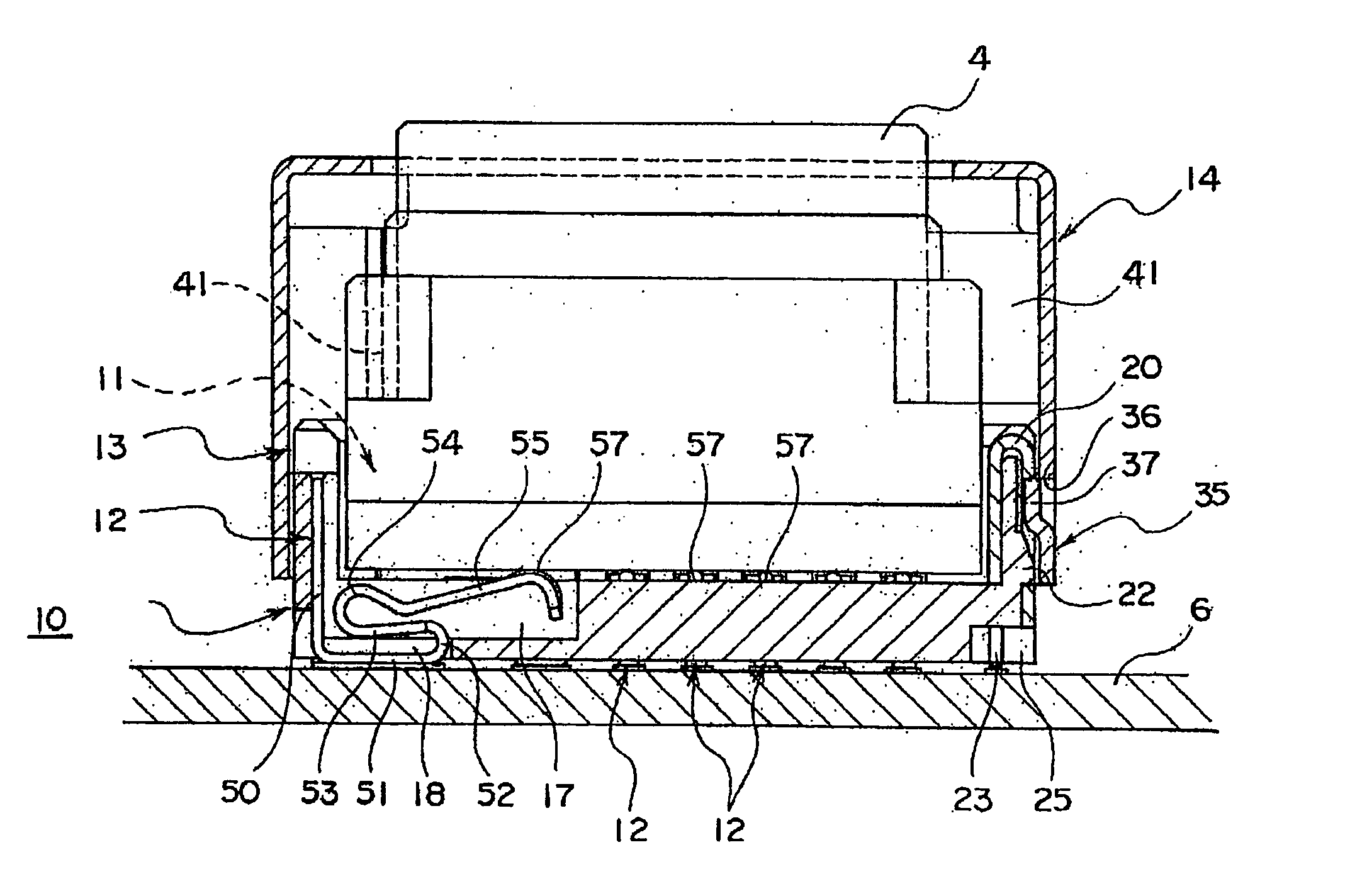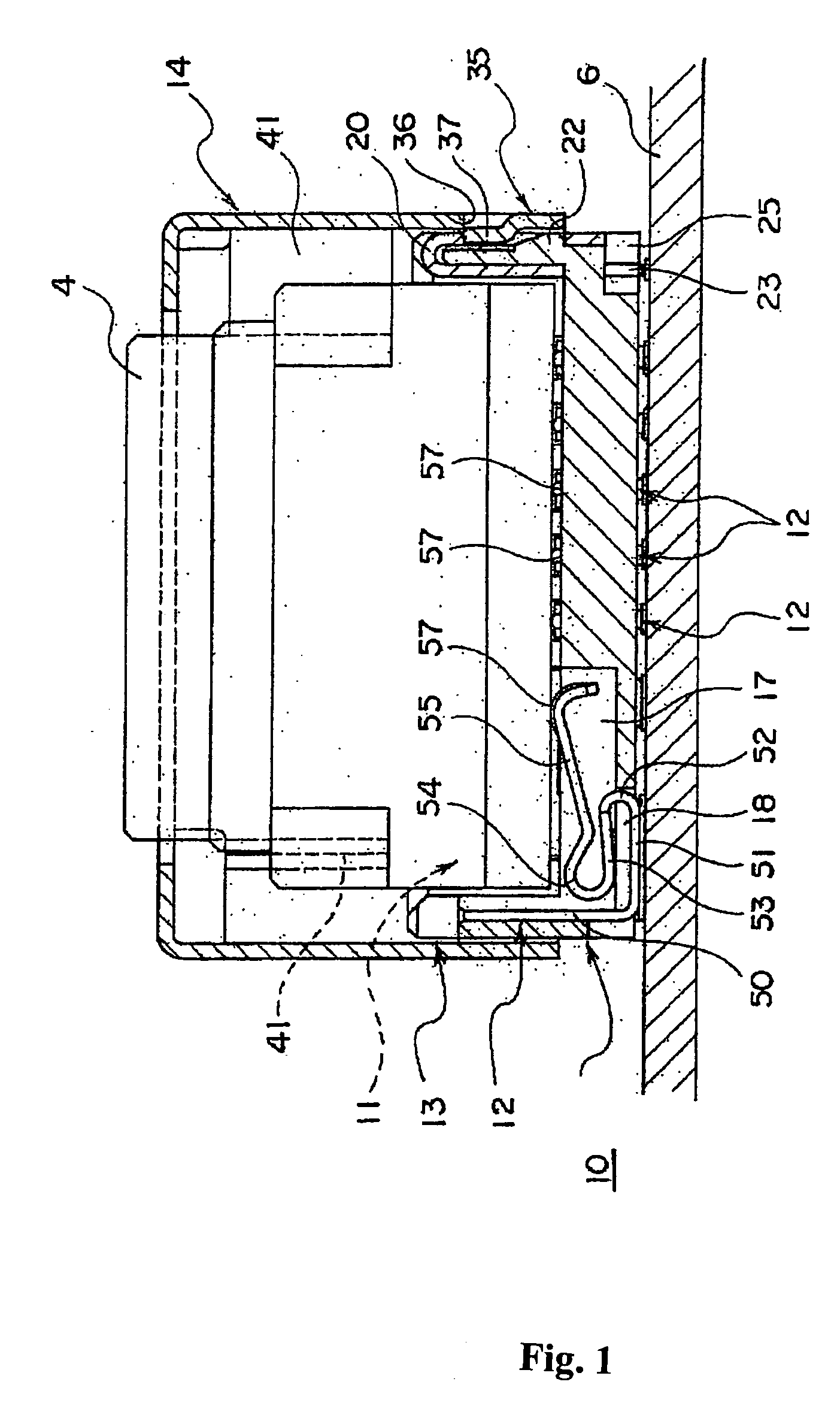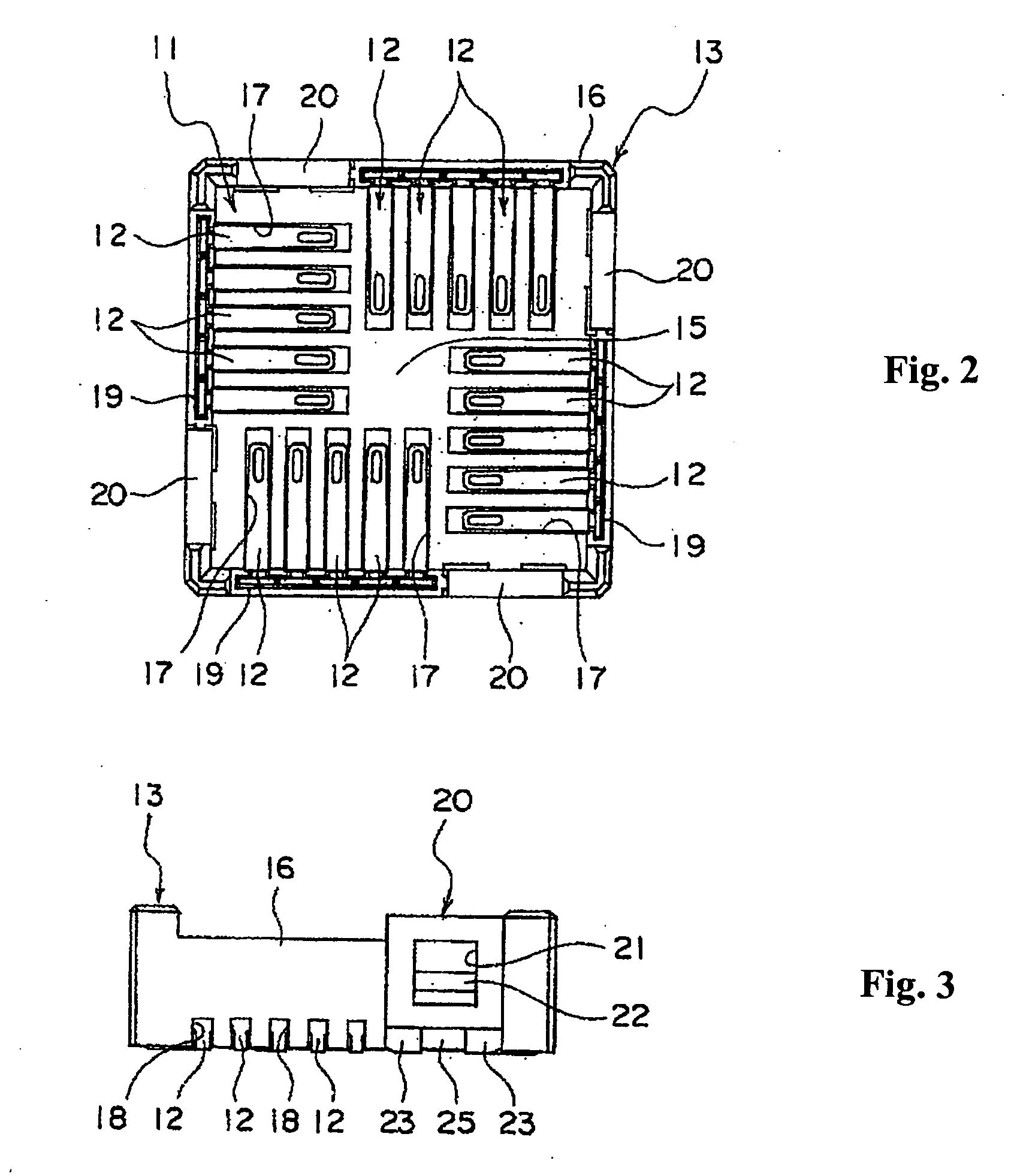Socket for attaching an electronic component
a technology for attaching electronic components and sockets, which is applied in the direction of coupling contact members, coupling device connections, coupling parts, etc., can solve the problems of increasing the thickness of the perimeter walls of the socket housing, increasing production costs, and difficult to achieve compact design
- Summary
- Abstract
- Description
- Claims
- Application Information
AI Technical Summary
Benefits of technology
Problems solved by technology
Method used
Image
Examples
Embodiment Construction
[0037] The electronic part attachment socket according to the present invention will be described using FIG. 1 through FIG. 13. Parts identical to what is described above will be assigned like numerals and corresponding descriptions will be omitted.
[0038]FIG. 1 shows an electronic part such as a camera module being used by being attached to a printed circuit substrate by way of an electronic part attachment socket. The figure shows an electronic part attachment socket 10, a camera module 4, and a printed circuit substrate 6.
[0039] The electronic part attachment module 10 is equipped with a socket housing 13 including an electronic part housing section 11 with an open upper surface allowing all or part of the electronic part 4 to be housed; and contacts 12, supported by the socket housing 13. The electronic part 4 housed in the electronic part housing section 11 is connected to the printed circuit substrate 6 by way of the contacts 12.
[0040] The electronic part attachment module 1...
PUM
 Login to View More
Login to View More Abstract
Description
Claims
Application Information
 Login to View More
Login to View More - R&D
- Intellectual Property
- Life Sciences
- Materials
- Tech Scout
- Unparalleled Data Quality
- Higher Quality Content
- 60% Fewer Hallucinations
Browse by: Latest US Patents, China's latest patents, Technical Efficacy Thesaurus, Application Domain, Technology Topic, Popular Technical Reports.
© 2025 PatSnap. All rights reserved.Legal|Privacy policy|Modern Slavery Act Transparency Statement|Sitemap|About US| Contact US: help@patsnap.com



